Visiting DC
You can request tours of the U.S. Capitol, Library of Congress, Federal Bureau of Investigation, Bureau of Engraving & Printing and The White House through my office via our Tour Request FormThis link opens in new window or tab.This link opens in new window or tab.This link opens in new window or tab.This link opens in new window or tab.This link opens in new window or tab.. Please note that if you are requesting a tour of the Federal Bureau of Investigation, you will also need to submit an FBI Tour Request FormThis link opens in new window or tab.This link opens in new window or tab.This link opens in new window or tab.This link opens in new window or tab.This link opens in new window or tab.This link opens in new window or tab. with information for every guest in your party.
For your convenience, my office provides information on various additional sites and attractions in the Washington, D.C. area. While my office is happy to provide information on these locations, you must book tours or visits directly through their websites. Where applicable, we have provided hours of operation and links for you to book tours directly. All the tours described below are free and open to the public unless otherwise noted.
Availability for tours is limited, especially during peak travel seasons. Tours can fill up quickly and are allotted on a first-come, first-served basis. I encourage you to submit your Tour Request FormThis link opens in new window or tab.This link opens in new window or tab.This link opens in new window or tab.This link opens in new window or tab.This link opens in new window or tab.This link opens in new window or tab. three months prior to your visit. For requests within 30 days of your visit to Washington, D.C., please contact my office to inquire about last-minute availability.
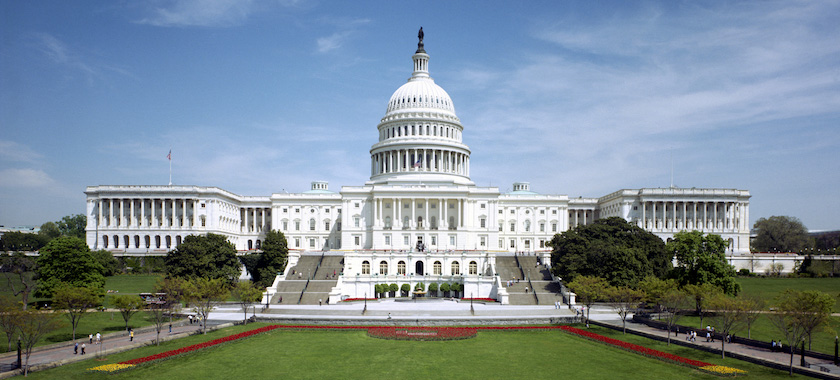
Perhaps the most recognizable symbol of American democracy worldwide, the U.S. Capitol has been the home of the Senate and House of Representatives for more than two centuries. The Capitol has been burnt, rebuilt, expanded, and restored as of 2017. Today, the Capitol is not only the seat of Government for the Legislative Branch but also a monument to America and its people. The Capitol Visitor Center provides constituents the ability to tour the building with a knowledgeable staff member. Tours are offered from 8:30 a.m. to 4:30 p.m. Monday through Saturday year-round, except for Thanksgiving Day, Christmas Day, New Year’s Day and Inauguration Day. Passes are required for tours and should be booked in advance by visiting U.S. Capitol Tour Reservation. If you are not able to secure a tour via that link, it is also possible to get a day-of tour pass. To do so, arrive to the Capitol Visitor Center as early as possible, around 8:30 a.m., and certainly no later than 2:30 p.m. The lines will get longer for day-of tours passes the later in the day you visit.
Tour capacity is extremely limited at this time and a tour is not guaranteed. To visit the Galleries of the Senate, please email Tours@duckworth.senate.gov about obtaining separate passes.
The Capitol Visitor Center is also currently accepting requests for virtual tours, which are available upon request by emailing CVCReservations@AOC.gov. Tours are 45-60 minutes, including time for questions. Tour participation requires a device that plays sound and video. Registration closes at 9:00 a.m. the previous day. To self-book your U.S. Capitol Virtual Tour and learn about the registration requirements, visit U.S. Virtual Capitol Tour Reservation.
The U.S. Capitol is best accessible from the Capitol South Station on the Orange, Silver and Blues Lines. It is also accessible from the Federal Center SW Station on the Orange, Silver and Blue lines and Union Station on the Red Line.
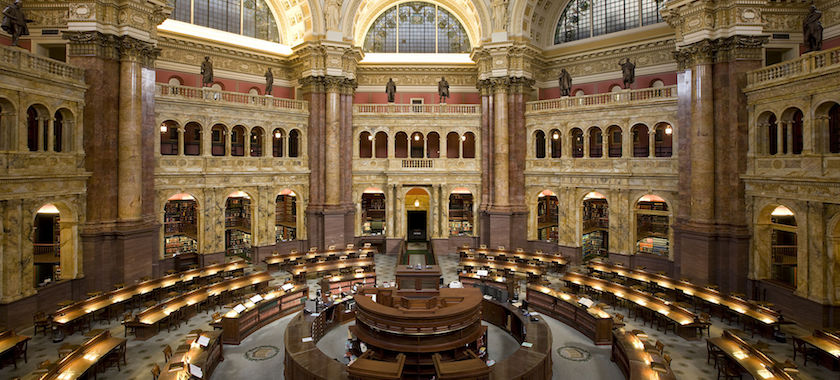
The Library of Congress is the United States’ oldest federal cultural institution and the largest library in the world with over 164,000,000 total items.
The Thomas Jefferson Building, the oldest of the three Library of Congress buildings is open to visitors Tuesday through Saturday from 10:00 a.m. to 5:00 p.m. Timed-entry passes are required and need to be reserved in advance by visiting Library of Congress Timed Entry Reservation. For Groups Larger than 10, please visit: Library of Congress Group Reservations to book a tour.
The Library of Congress is best accessible from the Capitol South Station on the Orange, Silver, and Blue Lines.
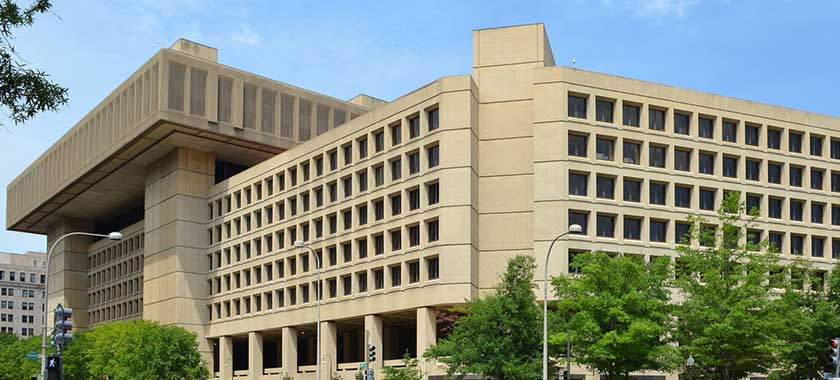
The FBI tour became the public face of the FBI in 1937, when FBI Headquarters was located in the Department of Justice building. In 1975, the J. Edgar Hoover FBI Building was opened to house Headquarters, and the tour became a significant component of the new building. Following the events of September 11, 2001, the tour was closed due to security risks and associated costs. It remained closed for nearly 10 years.
In 2008, the FBI converted the tour into a modern education center to provide new employees and its numerous partners with deeper understanding of the Bureau and its work. In August 2014, the FBI launched a pilot program that opened the FBI Education Center to the public. This allowed the Bureau the opportunity to tell its story—including its history, capabilities, and ideas for the future—to a wider audience.
Tours of the FBI are available Monday-Friday at 9:00 a.m., 10:00 a.m., 1:00 p.m. and 2:00 p.m. Requests for tours must be submitted at least 4 weeks in advance, but no more than 5 months in advance. To request a tour of the FBI, please complete our Tour Request Form online and submit an FBI Tour Request Form with information for every guest in your party. Tour capacity is extremely limited at this time and a tour is not guaranteed.
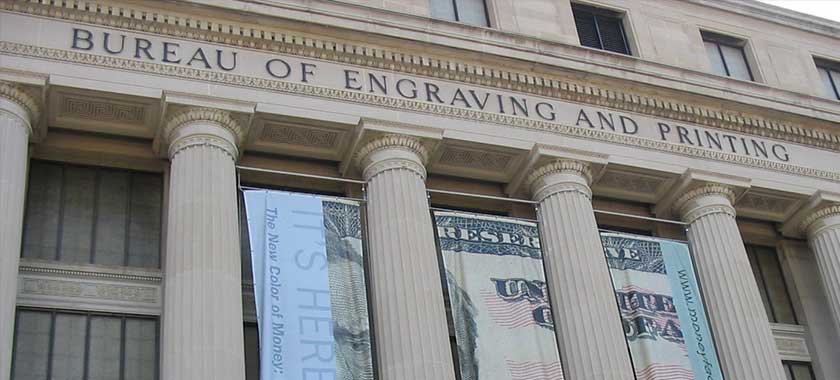
Each year, the Bureau of Engraving and Printing (BEP) prints billions of United States currency notes. The BEP Tour and Visitor Center is open Monday through Friday from 8:30am to 5:00pm, with the last Visitor Center entry at 4:30pm, and it is closed on federal holidays. The Visitor Center contains exhibits exploring the history of U.S. currency production.
The BEP Tour and Visitor Center also offers tours that provide visitors with the opportunity to see how currency is printed. Tour tickets are distributed on a first-come, first-served basis online via this link: BEP Tour Tickets. Tickets become available 60 days in advance of a given tour date. A limited number of same-day tickets will be in-person at the Tour and Visitor Center Entrance, located at 14th and C Streets, S.W., Wash., D.C. 20228. Tour staff are available at the Tour Entrance to assist guests with making reservations. Tickets are available for the same-day only. Tours run every 15 minutes between 9:00am and 4:00pm from Monday to Friday.
For groups larger than 10, please visit the Group Tours page on the BEP's website to book a tour.
The Bureau of Engraving & Printing is located on 14th & C Streets, SW, and can be entered on 14th Street. It is best accessible from the Smithsonian Metro Station on the Blue, Orange, and Silver Lines.
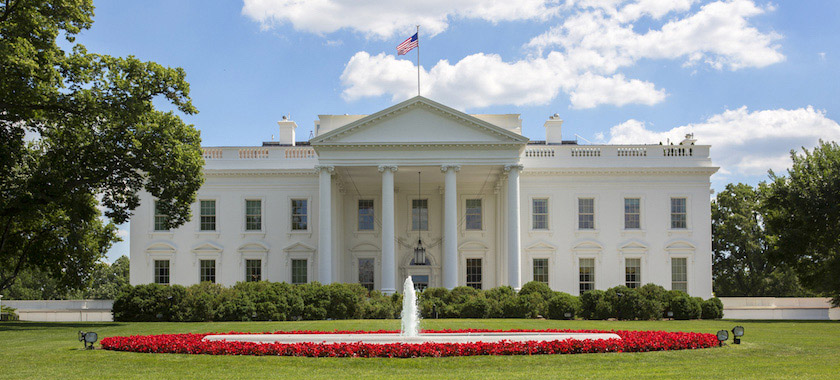
As the home and workplace of the President of the United States, the White House is a breathtaking sight with a rich history. Tours of the White House are available Tuesday through Saturday from 9:30 a.m. to 12:30 p.m. except for Federal holidays or unless otherwise noted. Requests for tours must be submitted at least 7 days in advance. To request a tour of the White House, please complete our Tour Request Form. Tickets become available 90 days before a visit date, so we suggest you fill out the request form as early as possible. Tour capacity is extremely limited at this time and a tour is not guaranteed.
The White House is accessible from the Farragut West or McPherson Square Metrorail Stops on the Blue, Orange, and Silver lines. It is also accessible from the Farragut North or Metro Center Metrorail Stops on the Red Line.
Other Attractions in Washington, D.C.
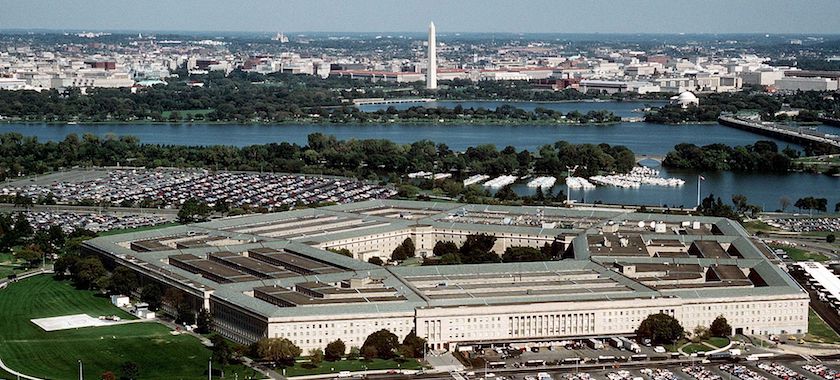
The Pentagon
Serving as the headquarters of the U.S. Department of Defense, the Pentagon houses approximately 23,000 military and civilian employees and is one of the largest office buildings in the world at 6,500,000 square feet.
Tours of the Pentagon last one-hour and include a 1.5 mile walk through the building. Tours of the Pentagon are available to the public by reservation only, Tuesdays and Thursdays at 10 a.m. and 1 p.m. No tours are conducted on weekends or federal holidays, and reservations must be made from at least 14 days in advance, but no more than 90 days in advance. To book a tour of the Pentagon go to the U.S. Department of Defense's website.
The Pentagon is best accessible from the Pentagon Metrorail Station on the Blue and Yellow Lines
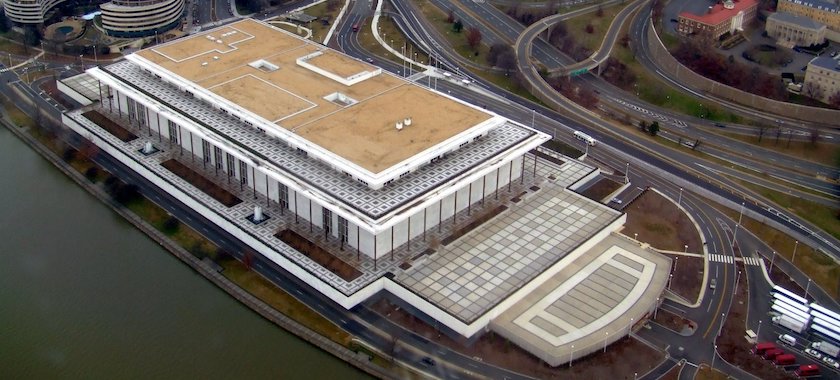
The Kennedy Center
The Kennedy Center serves as a cultural center for the nation’s most awe-inspiring performances and as a tribute to President John F. Kennedy. Tours of the Kennedy Center showcase the historical events that led to its establishment as well as an interactive exhibit on President Kennedy’s life. The Kennedy Center also features a stunning 360-degree rooftop view that overlooks Washington and the Potomac River. Tours are offered on a walk-in basis from 10:00 a.m. to 4:30 p.m. on weekdays, and 10:00 a.m. to 12:30 p.m. on weekends. Stop by the Tour Desk and a tour guide will be waiting to help you embark on your tour. For groups of 15 or more, you will need to schedule a tour with their Group Tour Request Form. For more information, visit the Kennedy Center's website.
The Kennedy Center is best accessible from the Foggy Bottom/GWU Metrorail Station on the Blue, Orange and Silver lines. There is also a shuttle to the Kennedy Center from the Foggy Bottom/GWU Metrorail Station starting at 9:45 a.m. every morning.

The United States Holocaust Memorial Museum
The United States Holocaust Memorial Museum encourages citizens and leaders to promote human rights, stand up to hatred and prevent genocide. The Museum provides extensive knowledge about the tragedy and preserves the memory of those who suffered. The museum features a number of exhibits, most notably a three-floor chronological narrative of the Holocaust. Due to the content of this exhibit, it is only recommended for guests eleven years and older.
Tours of the museum are self-guided, timed-entry tickets are required to tour the full museum. You can get your tickets in advance; they are release in three-month blocks about 3 months in advance. There are also a limited number of same-day tickets that are released every day at 7 a.m. ET. These tickets are distributed freely on a first-come first-served basis and denote your visit time to prevent the Museum from exceeding its capacity during the busy season. Get your tickets here.
The Museum and its exhibitions are open from 10:00 a.m. to 5:20 p.m., but from March 27th to June 16th, the Museum has extended hours until 6:30 p.m. on weekdays, and until 5:30 p.m. on weekends. The Museum is closed on Yom Kippur and on Christmas Day. Groups of 55 or more people need to schedule their tour visit on the Museum’s Group Reservations page. For more information, please visit the Museum’s website.
The Museum is accessible from the Smithsonian Metrorail Station on the Blue, Orange and Silver lines.

The United States Botanic Garden
The United States Botanic Garden is a living plant museum that provides visitors with a stunning and informative look into the importance of plant life. Established by the U.S. Congress in 1820, the Garden is one of the oldest botanic gardens in North America.
The Conservatory and the National Garden are open to the public every day from 10:00 a.m. to 5:00 p.m., with extended evening hours in summer for the National Garden until 7:00 p.m. The U.S. Botanic Garden provides offers recorded audio stories about its exhibits available in-person as you navigate the garden as well as virtually. To learn more about these options, please follow this link. For tours on specialized topics or temporary seasonal exhibits, please check the calendar of events.
The United States Botanic Garden is accessible from the Federal Center SW Metrorail Stop on the Blue, Orange and Silver Lines.
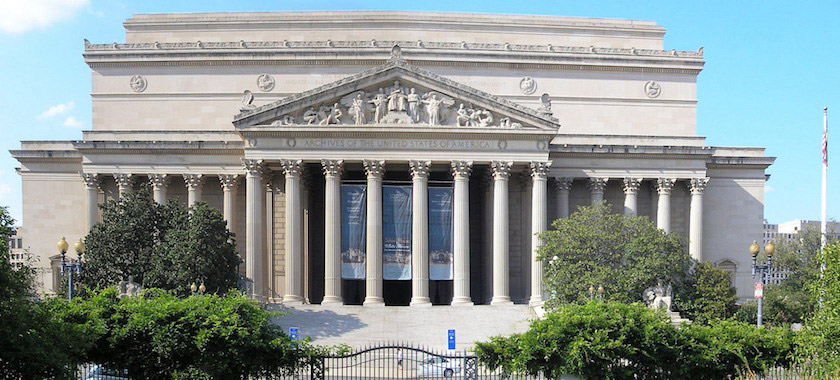
The National Archives
The National Archives is home to some of the most celebrated and important documents in United States history, such as the Declaration of Independence, Constitution and the Bill of Rights. Self-guided tours of the National Archives run from 10:00 a.m. to 5:30 p.m. except on Thanksgiving Day and Christmas Day.
Reserved guided tours are available Monday through Friday starting at 11:00 a.m. (Highlights of the Collection Tour) and 2:00 p.m. (Art and Architecture Tour) and reserved timed-entry tickets are available daily, starting from 10:15 a.m. till 4:30 p.m. before closing. Reserving timed-entry tickets is recommended, though not required, to enter the National Archives. To book a reserved tour or for more information please visit the National Archives Tours & Group Visits webpage
The National Archives is best accessed from the Archives/Navy Memorial/Penn Station Metrorail Stop on the Green and Yellow Lines.
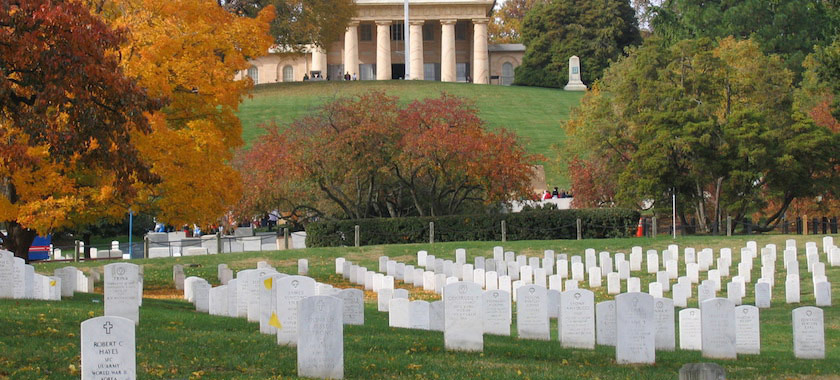
Arlington National Cemetery
Arlington National Cemetery is a final resting place for more than 400,000 of our nation’s bravest service members and their families. Arlington National Cemetery is open to the public from 8:00 a.m. to 5:00 p.m., 365 days a year. The cemetery is located in Arlington, Virginia and is walking distance from the Lincoln Memorial.
Tickets for an interpretive tour bus service operated by Arlington National Cemetery Tours, Inc. can be purchased here. These tours leave every 20 minutes from 8:30 a.m. to 4:00 p.m. daily, making 5-8 stops around the cemetery. For groups of 20 or more, please visit Arlington National Cemetery Tours, Inc. Group Tours webpage.
Arlington National Cemetery is best accessible from the Arlington Cemetery Metrorail Stop on the Blue Line.

The National Cathedral
The National Cathedral, designated by Congress as a “National House of Prayer,” is a breathtaking sight in Washington D.C.
Options for visiting the National Cathedral include Self-Guided Sightseeing, Guided Spotlights Tour and Themed Guided Tours. The Self-Guided Sightseeing is available Monday-Saturday from 10:00 a.m. to 5:00 p.m., though times vary often to accommodate events. Guided Spotlights Tours are available 10:30 a.m., 12:30, 1:30 and 3:30 p.m. Themed Guided Tours vary substantially in content and timing but commonly include Behind the Scenes tours and Tower Climb tours. For more information and to purchase tickets, please visit the Washington National Cathedral Visit and Tour webpage.
The National Cathedral is best accessible by car but can be accessed via public transit by taking the Red Metrorail Line to the Dupont Circle Stop and transferring to the N2 Metrobus at the Massachusetts Avenue & 20th Street Metrobus Stop and taking it to the Massachusetts Avenue & Wisconsin Avenue Metrobus Stop, which is a 2 block walk away from the National Cathedral.
.jpg)
The United States Supreme Court Building
The United States Supreme Court Building is home to the highest court in the United States.
The United States Supreme Court is open to the public Mondays through Fridays from 9:00 a.m. until 4:30 p.m. The Court does not offer guided walking tours but allows for self-guided tours of public portions of the building and offers a number of exhibitions. It is strongly recommended that visitors familiarize themselves with visitor etiquette and guidelines before their arrival.
Information on etiquette and guidelines
Information about Courtroom Lectures and other exhibits the Court offers
The Supreme Court Building is best accessible from the Capitol South Metrorail Stop on the Blue, Orange and Silver Lines.
.jpg)
The Department of State
The Department of State is the agency broadly responsible for the international relations of the United States. Visitors can view the Diplomatic Reception rooms, which are used to host official functions with visiting Chiefs of State, Heads of Governments, Foreign Ministers, and other distinguished guests. Guided tours of the Diplomatic Reception Rooms are offered by reservation only Monday through Friday at 9:30 a.m., 10:30 a.m., and 2:45 p.m. Reservations can be made online. Please make your reservations for this tour 90 days prior to your visit due to the high volume of requests.
The National Museum of American Diplomacy (NMAD) is located at the State Department’s 21st Street entrance. It is closed for renovations until early 2026. During that time, NMAD will accept a limited number of requests for virtual education programs for student groups of 12-40 individuals. NMAD staff may also be available to present off-site programs within the immediate Washington, DC area. If interested in requesting either of these options, please complete this form.
The Department of State is best accessible from the Foggy Bottom-GWU Metrorail Stop on the Blue, Orange and Silver Lines.
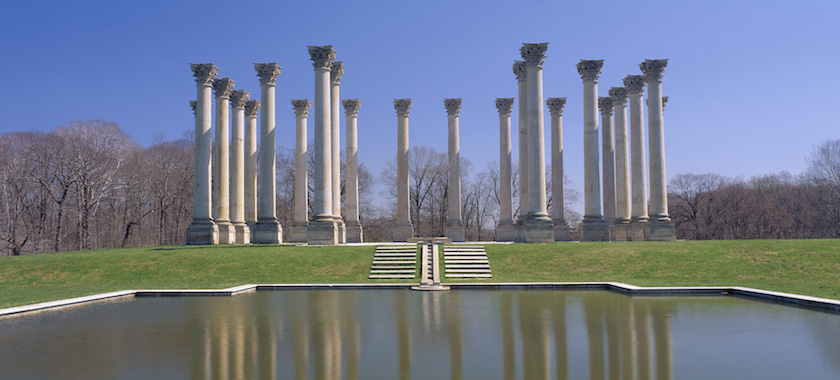
The United States National Arboretum
The United States National Arboretum was established in 1927 by an Act of Congress. The Arboretum enhances the economic, environmental, and aesthetic values of plants through long-term research and gives visitors the opportunity to enjoy this beautiful environment.
The Arboretum grounds are open to the public from 8:00 a.m. to 5:00 p.m. daily, except for Christmas Day. The Visitor Center is open from 8:00 a.m. to 5:00 p.m. and The National Bonsai & Penjing Museum is open from 10:00 a.m. to 4:00 p.m., both daily, except for Federal holidays, November through February.
The United States National Arboretum is best accessible by car but can be accessed via public transit by taking Metrorail to the Stadium-Armory Stop on the Blue, Orange and Silver Lines, then transferring to the B2 Metrobus and taking it to the Bladensburg Road NE & #1600 stops and walking four blocks to the R Street gates of the arboretum.
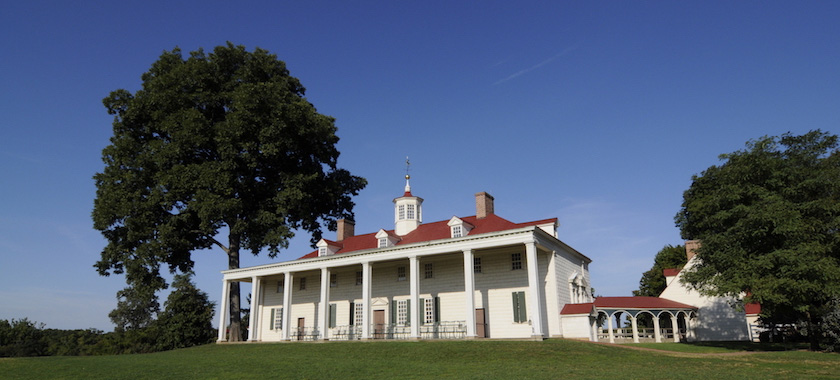
Mount Vernon
Home to the First President of the United States, Mount Vernon is an authentically interpreted 18th-century home and one of the nation’s most visited historic sites. Visitors are welcome to tour the Mount Vernon Estate which includes the historic Mansion house, slave quarters, kitchen, stables, greenhouse, gardens, trails and pioneer farm site.
Mount Vernon is open every day for visitors. Hours of operations are 9:00 a.m. to 6:00 p.m. from April through October, and from 9:00 a.m. to 5:00 p.m. from November through March. For special tours and activities, please visit their Tours webpage. For more information and to purchase tickets, please visit their website.
Mount Vernon is best accessible by car, as it is about 15 miles south of D.C., but it can be accessed via public transportation by taking the Metrorail Yellow Line to the Huntington Stop and catching the Fairfax Connector Bus #101 to Mount Vernon.
.jpg)
Smithsonian Institution
**The Smithsonian Institution Building is currently closed for renovation until 2028.
The Smithsonian Institution is the largest museum complex in the world, featuring 19 museums and galleries, the National Zoological Park and nine research facilities. The Smithsonian Institution Building (The Castle) was completed in 1855 and is the signature building and home to the Smithsonian Visitor Center.
Check with the Smithsonian Institution website for hours and locations for all of its institutions.
The Smithsonian Institution Building is best accessible from the Smithsonian Metrorail Stop on the Blue, Orange and Silver Lines.
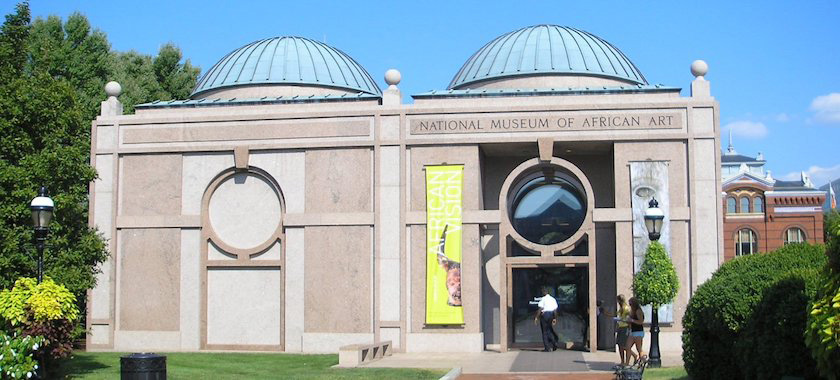
National Museum of African Art
The National Museum of African Art is Smithsonian Institution Museum and the only national museum in the country dedicated to the arts of Africa.
The museum is open daily from 10:00 a.m. to 5:30 p.m. except for Christmas Day, and like all Smithsonian Museums, admission is free. Docent-led tours are available throughout the week and must be requested at least 3 weeks in advance. For dates and times, please check their website.
The National Museum of African Art is best accessible from the Smithsonian Metrorail Stop on the Blue, Orange and Silver Lines.
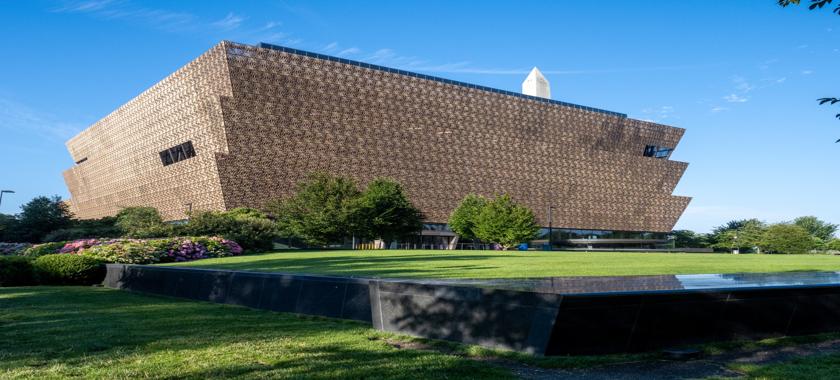
National Museum of African American History and Culture
The National Museum of African American History and Culture (NMAAHC) is a place where all Americans can learn about the richness and diversity of the African American experience, what it means to their lives, and how it helped us shape this nation. Some highlights include Harriet Tubman’s hymnal, Nat Turner’s bible, a plantation cabin from South Carolina, a Guard tower from Angola Prison, Chuck Berry’s red Cadillac convertible, and works by artists such as Charles Alston, Elizabeth Catlett, Romare Bearden and Henry O. Tanner.
The NMAAHC is open from 12pm-5:30pm on Mondays, and 10am-5:30pm Tuesday-Sunday, and does require free timed-entry passes to be reserved ahead of time, and they can be reserved at this link. For more information regarding the NMAAHC, please visit their website.
NMAAHC is best accessed from the Federal Triangle Metrorail Stop on the Orange, Blue and Silver Lines.
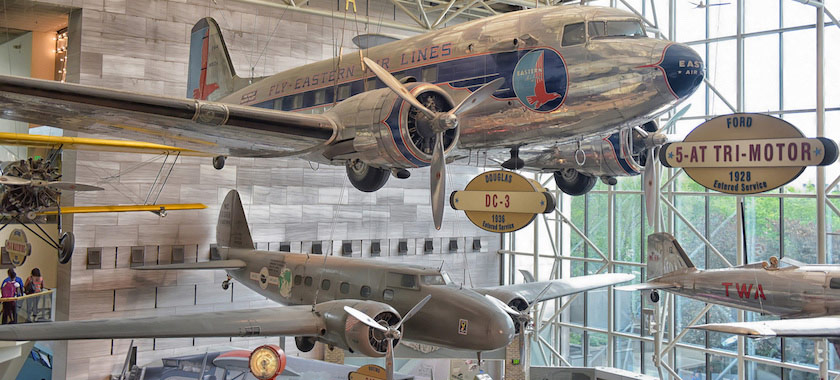
Air and Space Museum
The Air and Space Museum is the most popular of the Smithsonian Institutions and a great experience for the entire family. It has two locations, the National Air and Space Museum on the National Mall in D.C. and the Steven F. Udvar-Hazy Center in Chantilly, Virginia. The D.C. museum houses artifacts such as the Wright Brothers’ 1903 flyer and the Spirit of St. Louis and the Apollo 11 command module. The Museum has 22 exhibits total, as well as activities like flight simulators, an IMAX theatre and the Albert Einstein Planetarium.
The museum is free and open for visitors daily, from 10:00 a.m. to 5:30 p.m, except on Christmas Day. Free timed-entry passes are required to visit the D.C. location and can be found here.
The Air and Space Museum is best accessible from the L’Enfant Plaza Metrorail Stop on the Green, Yellow, Blue, Orange and Silver Lines.
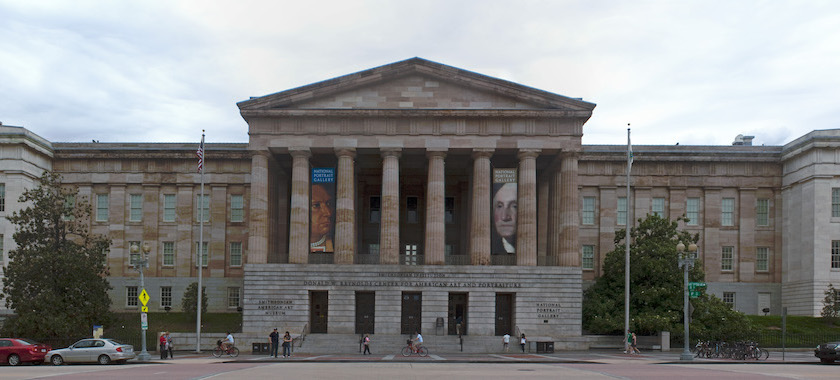
American Art Museum
The Smithsonian American Art Museum, along with the Renwick Gallery, is home to one of the largest collections of American artwork in the world. The museum contains work from more than 7,000 artists and captures the character and imagination of the American people throughout three centuries. The artwork showcases America’s vibrant artistic and cultural history from the colonial period to today. The Smithsonian American Art Museum (SAAM) and the Renwick Gallery are located on the national mall and are free to the public.
SAAM is open daily from 11:30 a.m. to 7:00 p.m., and the Renwick Gallery is open daily from 10:00 a.m. to 5:30 p.m., all days but Christmas Day. Docent-led tours are offered daily at both venues, and the schedules can be found on the SAAM Events Calendar webpage. Group tours can also be reserved at either location by visiting their Tours Request webpage at least three weeks in advance of the tour date.
The Renwick Gallery is best accessible from the Farragut West Metrorail Stop on the Blue, Orange and Silver Lines or the Farragut North Metrorail Stop on the Red Line. SAAM is best accessible from the Gallery Place-Chinatown Metrorail Stop on the Red, Green and Yellow Lines.
.jpg)
American History Museum
The National Museum of American History showcases some of the most important parts items in our nation’s history and culture, including the original Star-Spangled Banner, Dorothy’s Ruby Red Slippers and Lewis and Clark’s compass.
Admission to the museum is free and guests are welcome daily, except on Christmas Day, from 10:00 a.m. to 5:30 p.m. Featured events including docent-led tours can be found here.
The American History Museum is best accessible from either the Smithsonian or Federal Triangle Metrorail Stops on the Blue, Orange and Silver Lines.
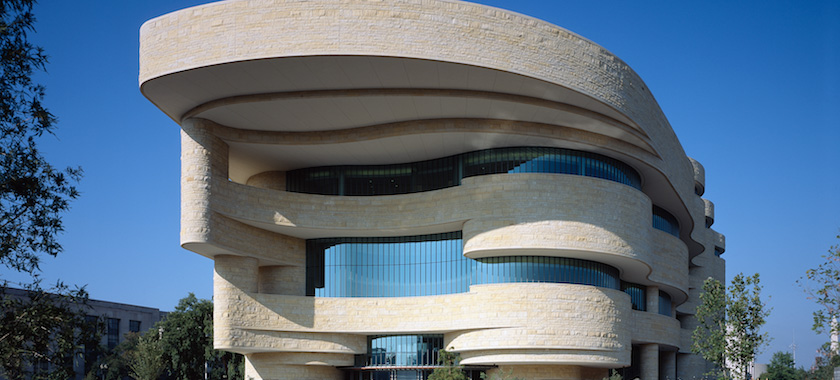
American Indian Museum
The National Museum of the American Indian is devoted to advancing knowledge and understanding of the languages, literature, history and arts of the Native Cultures of the Western Hemisphere. The Museum features collections from every time period and major cultural arena of the Americas.
The Museum welcomes guests for free every day, except on Christmas Day, from 10:00 a.m. to 5:30 p.m. Presentations and tours of specific galleries are offered Monday through Friday at 11:00 a.m. and 1:30 p.m., and last for 45 minutes. These experiences and other special events can be found here. Self-guided groups of any size are not required to register or have reservations or tickets to visit the museum. The museum does not offer formal programming for groups.
The National Museum of the American Indian is best accessible from the Federal Center SW Metrorail Stop on the Blue, Orange and Silver Lines.

National Zoo
Founded in 1889, the National Zoological Park is one of the oldest zoos in the country. The National Zoo spans 163 acres in Washington, D.C.’s Rock Creek Park and houses more than 2,100 animals across almost 400 different species.
The National Zoo is open to the public daily at 8 a.m., except on Christmas Day. From March 15 to September 14 the Zoo closes at 6 p.m., with last admittance at 5 p.m. From September 15 to March 14 the Zoo closes at 4 p.m., with last admittance at 3 p.m. (dates may vary each year). While the zoo is free to visit, entry passes are required and must be reserved in advance by visiting National Zoo Free Entry Pass. For groups larger than 16, please ensure that you select the “Group Entry” option on the Free Entry Passes form. Information about Zoo tours and other special events can be found here.
The National Zoo is best accessible from the Woodley Park-Zoo Metrorail Stop on the Red Line.
.jpg)
Natural History Museum
The National Museum of Natural History has been dedicating to promoting curiosity, learning and discovery of the natural world since its doors opened in 1910. The Museum contains more than 126 million specimens and cultural artifacts. The main building on the National Mall encompasses over 1.5 million square feet, with 325,000 square feet of exhibition space.
Admission is available every day, except on Christmas Day, for free from 10:00 a.m. to 5:30 p.m. Information about Museum tours and other special events can be found on the Natural History Museum Events webpage. For more information about this museum, please visit their website.
The Natural History Museum is best accessible from the Smithsonian or Federal Triangle Metrorail Stops on the Blue, Orange and Silver Lines.
.jpg)
National Portrait Gallery
The National Portrait Gallery was authorized and founded by Congress in 1962 with the mission to portray the people that shaped the culture and history of the United States. Today, the Gallery highlights influential people through the visual arts, performing arts, and new media. In addition, the National Portrait Gallery contains the only complete collection of presidential portraits outside the White House.
Admission is available for free daily, except on Christmas Day, from 11:30 a.m. to 7:00 p.m. Docent-led tours are available daily at 12:00 p.m. and 2:30 p.m. More information on docent-led tours and other events can be found here. For more information about this Smithsonian, please visit their website.
The National Portrait Gallery is best accessible from the Gallery Place—Chinatown Metrorail Stop on the Red, Green and Yellow Lines.
.jpg)
National Postal Museum
Located in the building that once serves as the Main Post Office of Washington, D.C., the National Postal Museum showcases the history of the United States Postal Service. In addition, the Museum contains a vast array of stamps and exhibits on areas such as the Pony Express.
The museum is free and open to the public daily, except on Christmas Day, from 10:00 a.m. and 5:30 p.m. Highlight tours occur most days at 11:30 a.m. and 2:00 p.m., and more information on these tours and other special events can be found on the National Postal Museum’s Calendar of Events webpage. For more information regarding the National Postal Museum, please visit their website.
The National Postal Museum is best accessible from the Union Station Metrorail Stop on the Red Line.
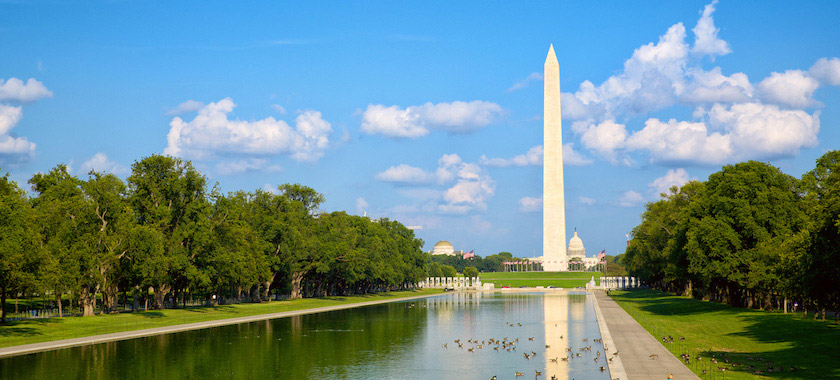
The Washington Monument
The Washington Monument, built in honor of President George Washington, is one of the most iconic landmarks in the United States.
The Washington Monument is open every day from 9:00 a.m. to 5:00 p.m. with the last tour beginning at 4:00 p.m. Tickets are required to enter the Washington Monument. Reserve online tickets here or pick up same-day tickets at the Washington Monument Lodge of 15th Street. Advanced reservations are strongly recommended. For more information regarding the Washington Monument, please visit their website.
The Washington Monument is best accessible form the Smithsonian Metrorail Stop on the Blue, Orange, or and Silver Lines.

Thomas Jefferson Memorial
The Jefferson Memorial is dedicated to Thomas Jefferson, the main author of the Declaration of Independence, first Secretary of State and third President of the United States. The monument sits along the southern edge of the Tidal Basin and provides an amazing view of Washington’s famous cherry blossoms in the spring.
The memorial is free and open to the public 24 hours a day. Rangers are on duty to answer questions from 9:30 a.m. to 10:00 p.m. daily and to provide interpretive programs throughout the day and upon request. Special calendar events related to monuments can be found on the National Mall and Memorial Parks Calendar of Events webpage. For more information about the Jefferson Memorial, please visit their website.
The Jefferson Memorial is best accessed from the Smithsonian Metrorail Stop on the Orange, Blue and Silver Lines.
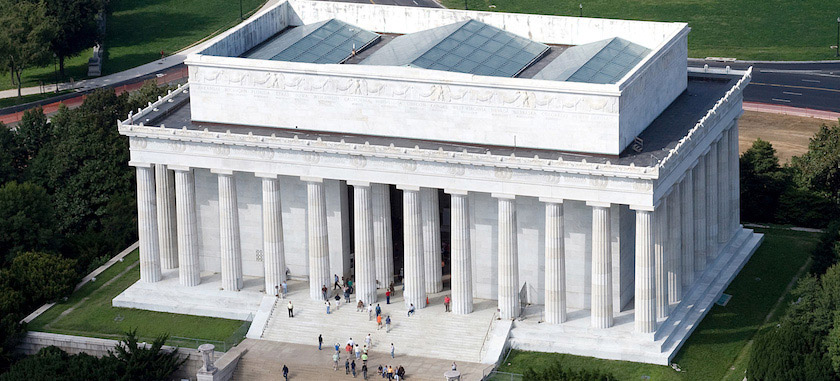
Lincoln Memorial
The Lincoln Memorial immortalizes one of the greatest Presidents of the United States, Abraham Lincoln, as a symbol of freedom, hope and equality. The Memorial features two of Lincoln’s most famous speeches, “The Gettysburg Address” and his Second Inaugural Address. The Memorial is also the location where Martin Luther King Jr. gave his historic “I Have a Dream” speech.
The memorial is free and open to the public 24 hours a day, and Rangers are on duty to answer questions from 9:30 a.m. to 10:00 p.m. daily and to provide interpretive programs throughout the day and upon request. The memorial is located on Lincoln Memorial Circle, Washington D.C on the east side of the National Mall. Special calendar events related to monuments can be found on the National Mall and Memorial Parks Calendar of Events webpage. For more information regarding the Lincoln Memorial please visit their website.
The Washington Monument is best accessible form the Foggy Bottom/GWU Metrorail Stop on the Blue, Orange and Silver Lines.
.jpg)
Franklin Roosevelt Memorial
The Franklin Delano Roosevelt Memorial is dedicated to the 32nd President of the United States and one of the most impactful Presidents in American history. Despite being diagnosed with polio at age 39, FDR emerged as a leader and guided the nation through the Great Depression and World War II. The FDR memorial spans 7.5 acres and guides visitors through four outdoor sections, each representing one term of Roosevelt’s presidency.
The public may visit the memorial 24 hours a day. Rangers are on duty to answer questions from 9:30 a.m. to 10:00 p.m. daily and to provide interpretive programs throughout the day and upon request. Special calendar events related to monuments can be found on the National Mall and Memorial Parks Calendar of Events webpage. For more information regarding the Franklin Roosevelt Memorial, please visit their website.
The Franklin Roosevelt Memorial is best accessed from the Smithsonian Metrorail Stop on the Orange, Blue and Silver Lines.
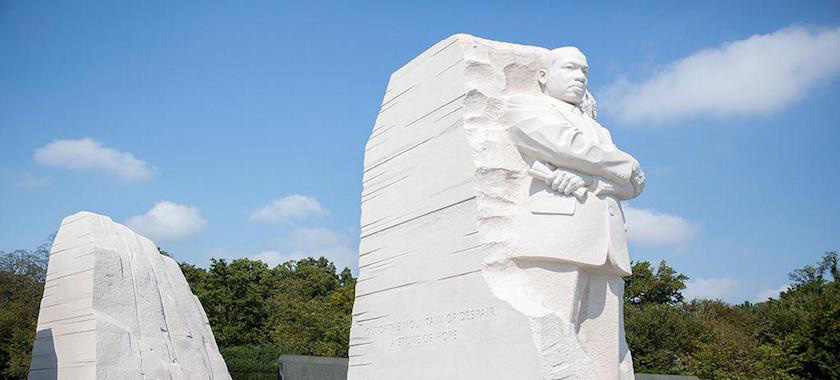
Martin Luther King Jr. Memorial
Located at the northwest corner of the Tidal Basin, the Martin Luther King Jr. Memorial honors Dr. King’s enduring legacy and the struggle for freedom, justice, and equality. Stretching 4 acres, the Monument includes the Stone of Hope, a thirty-foot statue of Dr. King, and the Inscription Wall, a compilation of Dr. King’s speeches, sermons, and writings.
The memorial is free and open to the public 24 hours a day, and Rangers are on duty to answer questions from 9:30 a.m. to 10:00 p.m. daily and to provide interpretive programs throughout the day and upon request. Special calendar events related to monuments can be found on the National Mall and Memorial Parks Calendar of Events webpage. For more information regarding the Martin Luther King, Jr. Memorial, please visit their website.
The Martin Luther King Jr. Memorial is best accessible from the Smithsonian Metrorail Stop on the Orange, Blue and Silver Lines.
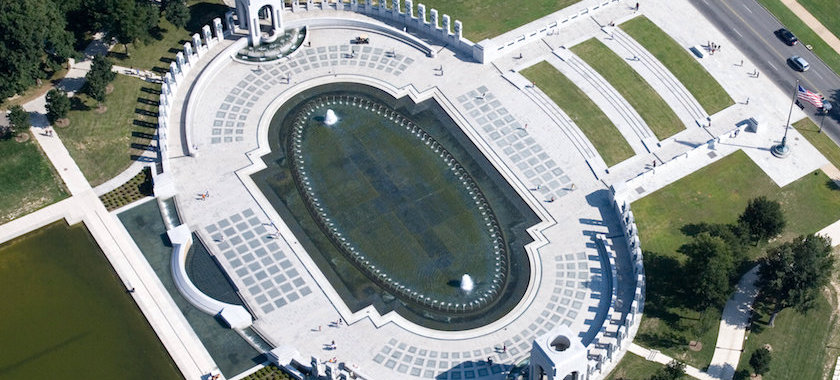
World War II Memorial
The World War II Memorial is dedicated to the 16 million Americans who served in the Armed Forces, the more than 400,000 who died, and all the civilians who supported from home during World War II.
The memorial is free and open to the public 24 hours a day, and Rangers are on duty to answer questions from 9:30 a.m. to 10:00 p.m. daily and to provide interpretive programs throughout the day and upon request. Special calendar events related to monuments can be found on the National Mall and Memorial Parks Calendar of Events webpage. For more information regarding the World War II Memorial, please visit their website.
The World War II Memorial is best accessed from the Smithsonian Metrorail Stop on the Orange, Blue and Silver Lines.
.jpg)
Korean War Veterans Memorial
The Korean War Veterans Memorial sits slightly southeast of the Lincoln Memorial and commemorates those that served in the Korean War. The Memorial features walls of granite with over 2,500 photographic images, as well as 19 stainless steel statues inside the walls representing members of the armed forces.
The memorial is free and open to the public 24 hours a day, and Rangers are on duty to answer questions from 9:30 a.m. to 10:00 p.m. daily and to provide interpretive programs throughout the day and upon request. Special calendar events related to monuments can be found on the National Mall and Memorial Parks Calendar of Events webpage. For more information regarding the Korean War Memorial, please visit their website.
The Korean War Memorial is best accessed from the Foggy Bottom/GWU Metrorail Stop on the Orange, Blue and Silver Lines.
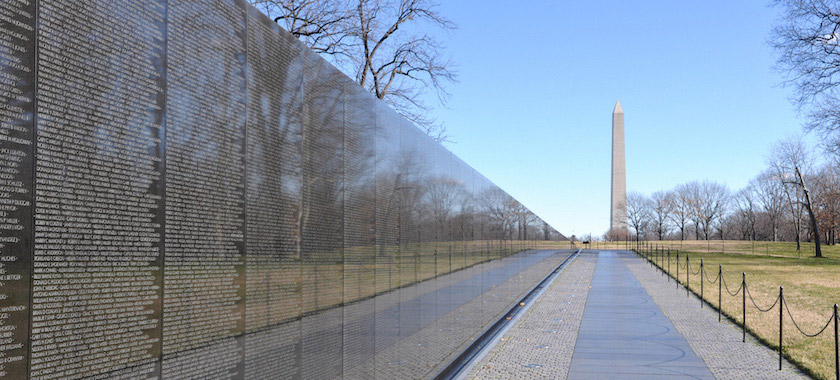
Vietnam Veterans Memorial
The Vietnam Veterans Memorial is located just northeast of the Lincoln Memorial and serves as to honor those who died in service or were missing in action during the Vietnam War. Completed in 1982, the Memorial is made up of two 246-foot-9-inch-long wall of black granite which contains the names of 58,318 service members.
The memorial is free and open to the public 24 hours a day, and Rangers are on duty to answer questions from 9:30 a.m. to 10:00 p.m. daily and to provide interpretive programs throughout the day and upon request. Special calendar events related to monuments can be found on the National Mall and Memorial Parks Calendar of Events webpage. For more information regarding the Vietnam War Memorial, please visit their website.
The Vietnam Veterans Memorial is best accessed from the Foggy Bottom/GWU Metrorail Stop on the Orange, Blue and Silver Lines.
